Successful container planting depends as much on the maintenance as it does on the design. Though I do have clients that never touch their containers once they are planted, I find that gardeners who look after their containers enjoy them more, and enjoy them longer. If you have kept up with the need for water, this extraordinarily hot summer has been a dream come true for annual plants. Many of them are native to hot, tropical climates. They luxuriate in the heat. Every plant is on top of, and competing for a dominant position with its neighbor.
Plants compete with other plants. Given that there is only so much light, and so much water, any garden in its simplest definition is the story of that competition. In these urns of my own, every day the potato vine threatens to engulf the silver dichondra. It is up to me to level the playing field. I remove those leaves that shade or otherwise interfere with the well being of the dichondra. I signed up for this job, as I planted two vines whose habit and vigor are very different.
This window box that I planted for a client requires little in the way of intervention. The caladiums produce lots of leaves, but the impatiens have found a way to work theimselves to the forefront. They coexist-peaceably.
This container features plants that harmonize without much intervention. The nicotiana are tall-and above the fray. The petunias are very good eggs that tolerate the pestering from the stems of the lime licorice. The Diamond Frost euphorbia is just now making a break for it.
The pots in front of the shop this year-the relationships are complicated. The mandevillea is a big growing vine with big paddle shaped leaves that produce shade. The petunias just grow, and expect the best from their neighbors. The euphorbia is delicate, but persistent. The plectranthus-a big leaved thug that would smother anything in its path.
I planted mandevillea, as it vines luxuriantly, and grows very tall. A month ago, I started removing the leaves at the ground level-they were shading the plants on the ground plane. The petunias are willing and able to perform, providing they get great light, and food. They are heavy feeders. Should you want great performance from your petunias, feed them regularly. Grow them on the dry side. Trim the straggly ends-routinely.
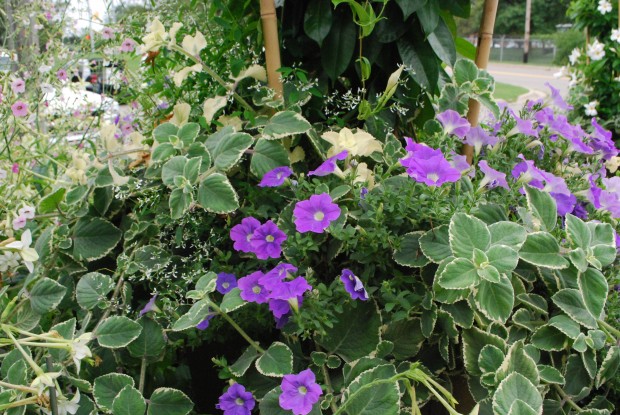
Diamond Frost euphorbia is pitiful in early spring. That anyone buys and plants it amazes me. I plant it, as I believe in what it can do in the home stretch. It needs an extended period of heat to come on. Once those slender stems and airy flowers get going, they add add an unequalled wispy volume to a container planting.
Plectranthus is a thug. It features long thick stems, and large leaves. It would smother anything in its path-given the chance. Why plant it? Few plants are better at creating and sustaining great volume and mass. The tall pots in the front of the shop have a very small planting area. They ask for something that grows wide. Plectranthus will grow every which way, including wide. How do I manage it? Like the mandevillea, I remove those leaves that threaten to smother all of the other plants. Some of my plectranthus are bare stems, until they go over the edge of the pot.
It is my job to make room for the euphorbia. Though the stems and blooms are ever so slight, they have a big will to live. I just do what I can to help their natural process along. This work means my late September containers will have something good to say. Container plantings? With care, they will prosper late into the fall.
Every plant you plant-no matter if it is shrub or a tree or a perennial or an annual-they have habits. Every living thing has habits. A collection of plants that you intend to represent a garden rely upon you to sort out the real relationships. Be in charge. A garden with a thoughtful gardener in charge? I respect this.
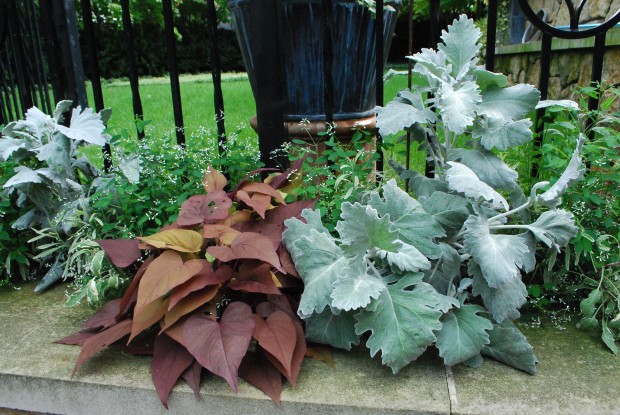
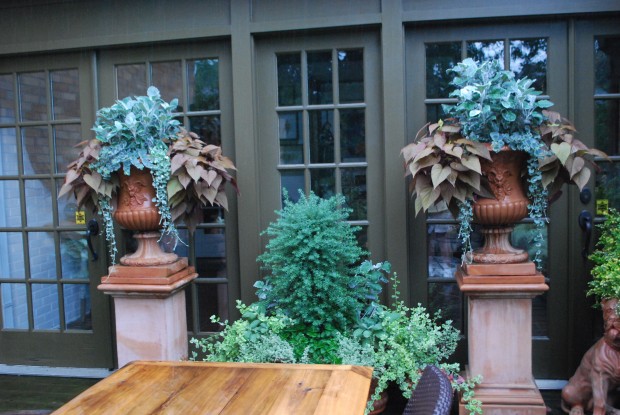

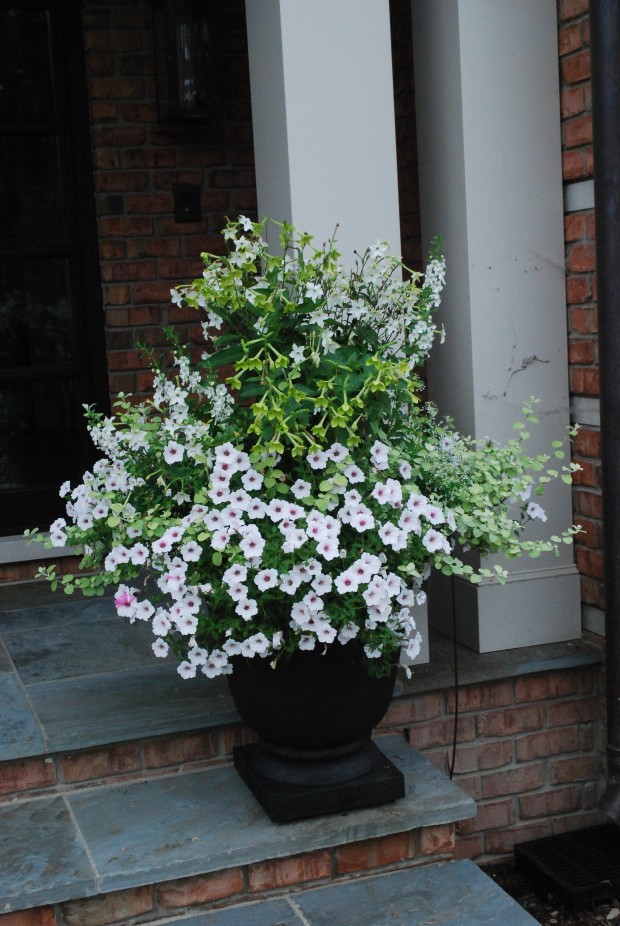
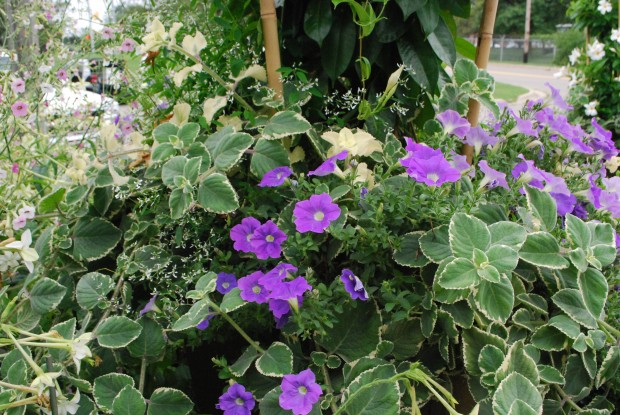
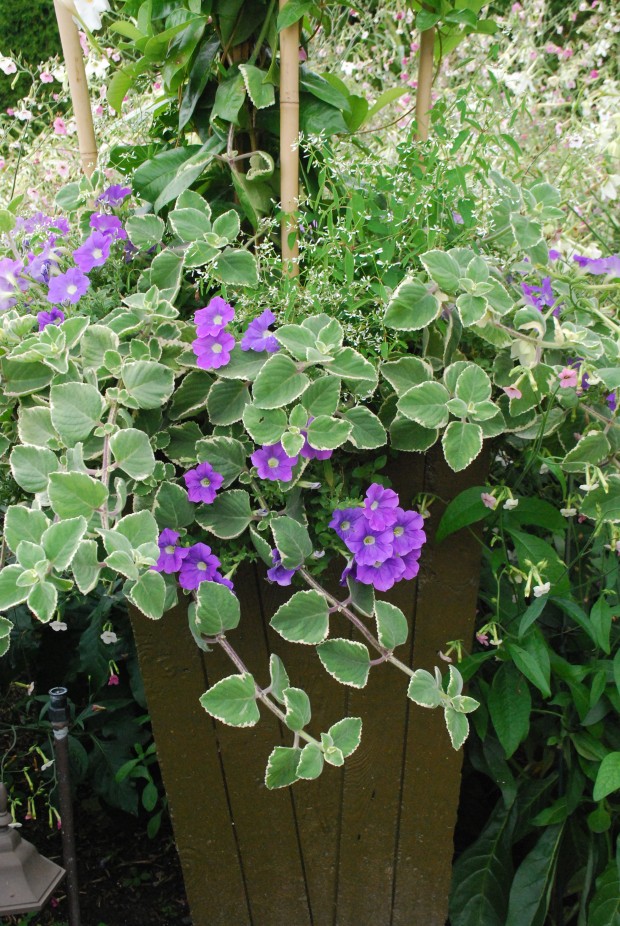

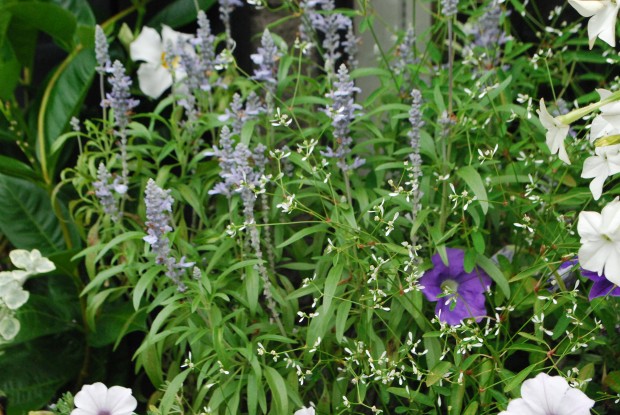
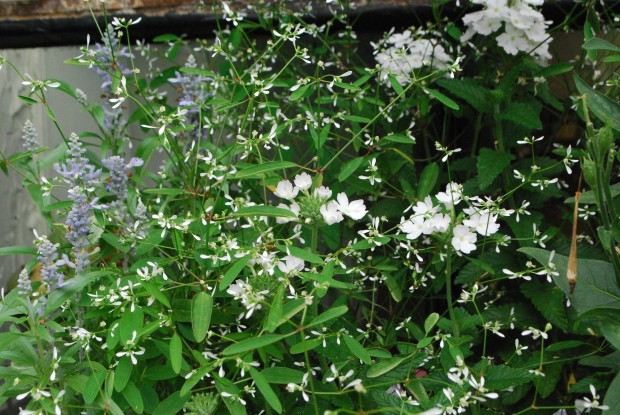
I love the way you portray gardening emphasising the relationship aspect. Great article I really enjoyed reading it. You obviously know what you’re doing too in light of your pictures!
Thanks for this! I do think the relationships established are very important. When I do things in a garden or container that don’t work, not having paid enough attention to this is usually the reason.
Deborah, sorry if you have covered this before but I would love to know what you fertilize with and how often. Your plants look so healthy. Mine looked great early but are now looking spindly and unhappy.
Hi Carla, I feed with a liquid feed-either a balanced formula, or a bloom booster formula. Million bells I feed with miracid, as they decline with water that is alkaline (our water is very alkaline). I feed a generous tablespoon to a gallon for big feeders, like petunias, geraniums and dahlias. Coleus and begonias, I am more circumspect with the feed. Succulents-I don’t feed them. I feed every week to 10 days, and I am sure to completely flush the soil through with water between feedings-to avoid a buildup of soluble salts. You may want to trim your plants back, water them, then soak the wet soil with feed-and avoid watering again as long as you can. This gives the plants time to take up the feed, before it is flushed out of the soil with the next watering. Some gardeners-and most certainly professional growers- feed at lower rates, every watering. That can be tricky. I just read in Grower Talks magazine that greenhouses have more losses to a buildup of the salts in the soil from fertilizer than any disease or pest.
I hope this helps! Thanks, Deborah
Thank you Deborah. Yes that helps a lot.
Thank you